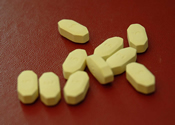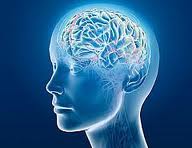Prescription Drug Information

Prescription drug abuse means taking a prescription medication that is not prescribed for you, or taking it for reasons or in dosages other than as prescribed. Abuse of prescription drugs can produce serious health effects, including addiction. Commonly abused classes of prescription medications include opioids (for pain), central nervous system depressants (for anxiety and sleep disorders), and stimulants (for ADHD and narcolepsy). Opioids include hydrocodone (Vicodin®), oxycodone (OxyContin®), propoxyphene (Darvon®), hydromorphone (Dilaudid®), meperidine (Demerol®), and diphenoxylate (Lomotil®). Central nervous system depressants include barbiturates such as pentobarbital sodium (Nembutal®), and benzodiazepines such as diazepam (Valium®) and alprazolam (Xanax®). Stimulants include dextroamphetamine (Dexedrine®), methylphenidate (Ritalin® and Concerta®), and amphetamines (Adderall®).
Long-term use of opioids or central nervous system depressants can lead to physical dependence and addiction. Opioids can produce drowsiness, constipation and, depending on amount taken, can depress breathing. Central nervous system depressants slow down brain function; if combined with other medications that cause drowsiness or with alcohol, heart rate and respiration can slow down dangerously. Taken repeatedly or in high doses, stimulants can cause anxiety, paranoia, dangerously high body temperatures, irregular heartbeat, or seizures.
In 2008, 15.2 million Americans age 12 and older had taken a prescription pain reliever, tranquilizer, stimulant, or sedative for nonmedical purposes at least once in the year prior to being surveyed. Source: National Survey on Drug Use and Health (Substance Abuse and Mental Health Administration Web Site). The NIDA-funded 2008 Monitoring the Future Study showed that 2.9% of 8th graders, 6.7% of 10th graders, and 9.7% of 12th graders had abused Vicodin and 2.1% of 8th graders, 3.6% of 10th graders, and 4.7% of 12th graders had abused OxyContin for nonmedical purposes at least once in the year prior to being surveyed. Source: Monitoring the Future (University of Michigan Web Site)
Although most people take prescription medications responsibly, there has been an increase in the nonmedical use of or, as NIDA refers to it in this report, abuse1 of prescription drugs in the United States.
What are some of the commonly
abused prescription drugs?
Although many prescription drugs can be abused, there are several classifications of medications that are commonly abused.
The three classes of prescription drugs that are most commonly abused are:
- Opioids, which are most often prescribed to treat pain;
- Central nervous system (CNS) depressants, which are used to treat anxiety and sleep disorders; and
- Stimulants, which are prescribed to treat the sleep disorder narcolepsy and attention-deficit hyperactivity disorder (ADHD).
Opioids
What are opioids? 
Opioids are commonly prescribed because of their effective analgesic, or pain-relieving, properties. Medications that fall within this class-referred to as prescription narcotics-include morphine (e.g., Kadian, Avinza), codeine, oxycodone (e.g., OxyContin, Percodan, Percocet), and related drugs. Morphine, for example, is often used before and after surgical procedures to alleviate severe pain. Codeine, on the other hand, is often prescribed for mild pain. In addition to their pain-relieving properties, some of these drugs-codeine and diphenoxylate (Lomotil) for example-can be used to relieve coughs and diarrhea.
How do opioids affect
the brain and body?
Opioids act on the brain and body by attaching to specific proteins called opioid receptors, which are found in the brain, spinal cord, and gastrointestinal tract. When these drugs attach to certain opioid receptors, they can block the perception of pain. Opioids can produce drowsiness, nausea, constipation, and, depending upon the amount of drug taken, depress respiration. Opioid drugs also can induce euphoria by affecting the brain regions that mediate what we perceive as pleasure. This feeling is often intensified for those who abuse opioids when administered by routes other than those recommended. For example, OxyContin often is snorted or injected to enhance its euphoric effects, while at the same time increasing the risk for serious medical consequences, such as opioid overdose.
What are the possible consequences
of opioid use and abuse?
Taken as directed, opioids can be used to manage pain effectively. Many studies have shown that the properly managed, short-term medical use of opioid analgesic drugs is safe and rarely causes addiction-efined as the compulsive and uncontrollable use of drugs despite adverse consequences-or dependence, which occurs when the body adapts to the presence of a drug, and often results in withdrawal symptoms when that drug is reduced or stopped. Withdrawal symptoms include restlessness, muscle and bone pain, insomnia, diarrhea, vomiting, cold flashes with goose bumps ("cold turkey"), and involuntary leg movements. Long-term use of opioids can lead to physical dependence and addiction. Taking a large single dose of an opioid could cause severe respiratory depression that can lead to death.
Is it safe to use opioid drugs
with other medications?
Only under a physician's supervision can opioids be used safely with other drugs. Typically, they should not be used with other substances that depress the CNS, such as alcohol, antihistamines, barbiturates, benzodiazepines, or general anesthetics, because these combinations increase the risk of life-threatening respiratory depression.
1 A common vocabulary has not been established in the field of prescription drug abuse. Because much of the data collected in this area focuses on nonmedical use of prescription drugs, the definition of abuse used in this report does not correspond to the definition of abuse/dependence listed in the Diagnostic and Statistical Manual of Mental Disorders (DSM).
2 This does not apply only to opioids. Changes in routes of administration also contribute to the abuse of other prescription medications, and this practice can lead to serious medical consequences.
What are CNS depressants?
CNS depressants, sometimes referred to as sedatives and tranquilizers, are substances that can slow normal brain function. Because of this property, some CNS depressants are useful in the treatment of anxiety and sleep disorders. Among the medications that are commonly prescribed for these purposes are the following:
- Barbiturates, such as mephobarbital (Mebaral) and pentobarbital sodium (Nembutal), are used to treat anxiety, tension, and sleep disorders.
- Benzodiazepines, such as diazepam (Valium), chlordiazepoxide HCl (Librium), and alprazolam (Xanax), are prescribed to treat anxiety, acute stress reactions, and panic attacks. The more sedating benzodiazepines, such as triazolam (Halcion) and estazolam (ProSom) are prescribed for short-term treatment of sleep disorders. Usually, benzodiazepines are not prescribed for long-term use.
How do CNS depressants
affect the brain and body? 
There are numerous CNS depressants; most act on the brain by affecting the neurotransmitter gammaaminobutyric acid (GABA). Neurotransmitters are brain chemicals that facilitate communication between brain cells. GABA works by decreasing brain activity. Although the different classes of CNS depressants work in unique ways, it is through their ability to increase GABA activity that they produce a drowsy or calming effect that is beneficial to those suffering from anxiety or sleep disorders.
What are the possible consequences
of CNS depressant use and abuse?
Despite their many beneficial effects, barbiturates and benzodiazepines have the potential for abuse and should be used only as prescribed. During the first few days of taking a prescribed CNS depressant, a person usually feels sleepy and uncoordinated, but as the body becomes accustomed to the effects of the drug, these feelings begin to disappear. If one uses these drugs long term, the body will develop tolerance for the drugs, and larger doses will be needed to achieve the same initial effects. Continued use can lead to physical dependence and - when use is reduced or stopped - withdrawal. Because all CNS depressants work by slowing the brain's activity, when an individual stops taking them, the brain's activity can rebound and race out of control, potentially leading to seizures and other harmful consequences. Although withdrawal from benzodiazepines can be problematic, it is rarely life threatening, whereas withdrawal from prolonged use of other CNS depressants can have life-threatening complications. Therefore, someone who is thinking about discontinuing CNS depressant therapy or who is suffering withdrawal from a CNS depressant should speak with a physician or seek medical treatment.
Is it safe to use CNS depressants
with other medications?
CNS depressants should be used in combination with other medications only under a physician's close supervision. Typically, they should not be combined with any other medication or substance that causes CNS depression, including prescription pain medicines, some OTC cold and allergy medications, and alcohol. Using CNS depressants with these other substances - particularly alcohol - can slow both the heart and respiration and may lead to death.
Stimulants
What are stimulants?
As the name suggests, stimulants increase alertness, attention, and energy, as well as elevate blood pressure and increase heart rate and respiration. Stimulants historically were used to treat asthma and other respiratory problems, obesity, neurological disorders, and a variety of other ailments. But as their potential for abuse and addiction became apparent, the medical use of stimulants began to wane. Now, stimulants are prescribed for the treatment of only a few health conditions, including narcolepsy, ADHD, and depression that has not responded to other treatments.
How do stimulants affect
the brain and body?
Stimulants, such as dextroamphetamine (Dexedrine and Adderall) and methylphenidate (Ritalin and Concerta), have chemical structures similar to a family of key brain neurotransmitters called monoamines, which include norepinephrine and dopamine. Stimulants enhance the effects of these chemicals in the brain. Stimulants also increase blood pressure and heart rate, constrict blood vessels, increase blood glucose, and open up the pathways of the respiratory system. The increase in dopamine is associated with a sense of euphoria that can accompany the use of these drugs.
What are the possible consequences
of stimulant use and abuse?
As with other drugs of abuse, it is possible for individuals to become dependent upon or addicted to many stimulants. Withdrawal symptoms associated with discontinuing stimulant use include fatigue, depression, and disturbance of sleep patterns. Repeated use of some stimulants over a short period can lead to feelings of hostility or paranoia. Further, taking high doses of a stimulant may result in dangerously high body temperature and an irregular heartbeat. There is also the potential for cardiovascular failure or lethal seizures.
Is it safe to use stimulants
with other medications?
Stimulants should be used in combination with other medications only under a physician's supervision. Patients also should be aware of the dangers associated with mixing stimulants and OTC cold medicines that contain decongestants; combining these substances may cause blood pressure to become dangerously high or lead to irregular heart rhythms.
Stimulant medications (e.g., methylphenidate and amphetamines) are often prescribed to treat individuals diagnosed with attention-deficit hyperactivity disorder (ADHD). ADHD is characterized by a persistent pattern of inattention and/or hyperactivity-impulsivity that is more frequently displayed and more severe than is typically observed in individuals at a comparable level of development. This pattern of behavior usually becomes evident in the preschool or early elementary years, and the median age of onset of ADHD symptoms is 7 years. For many individuals, ADHD symptoms improve during adolescence or as age increases, but the disorder can persist into adulthood. In the United States, ADHD is diagnosed in an estimated 8 percent of children ages 4–17 and in 2.9–4.4 percent of adults.
How Do Prescription Stimulants Affect the Brain?
All stimulants work by increasing dopamine levels in the brain—dopamine is a brain chemical (or neurotransmitter) associated with pleasure, movement, and attention. The therapeutic effect of stimulants is achieved by slow and steady increases of dopamine, which are similar to the natural production of the chemical by the brain. The doses prescribed by physicians start low and increase gradually until a therapeutic effect is reached. However, when taken in doses and routes other than those prescribed, stimulants can increase brain dopamine in a rapid and highly amplified manner—as do most other drugs of abuse—disrupting normal communication between brain cells, producing euphoria, and increasing the risk of addiction.
What Is the Role of Stimulants in the Treatment of ADHD?
Treatment of ADHD with stimulants, often in conjunction with psychotherapy, helps to improve the symptoms of ADHD, as well as the self-esteem, cognition, and social and family interactions of the patient. The most commonly prescribed medications include amphetamines (e.g., Adderall®, a mix of amphetamine salts) and methylphenidate (e.g., Ritalin and Concerta—a formulation that releases medication in the body over a period of time). These medications have a paradoxically calming and “focusing” effect on individuals with ADHD. Researchers speculate that because methylphenidate amplifies the release of dopamine, it can improve attention and focus in individuals who have dopamine signals that are weak.
One of the most controversial issues in child psychiatry is whether the use of stimulant medications to treat ADHD increases the risk of substance abuse in adulthood. Research thus far suggests that individuals with ADHD do not become addicted to their stimulant medications when taken in the form and dosage prescribed by their doctors. Furthermore, several studies report that stimulant therapy in childhood does not increase the risk for subsequent drug and alcohol abuse disorders later in life. More research is needed, however, particularly in adolescents treated with stimulant medications.
Why and How Are Prescription Stimulants Abused?
Stimulants have been abused for both “performance enhancement” and recreational purposes (i.e., to get high). For the former, they suppress appetite (to facilitate weight loss), increase wakefulness, and increase focus and attention. The euphoric effects of stimulants usually occur when they are crushed and then snorted or injected. Some abusers dissolve the tablets in water and inject the mixture. Complications from this method of use can arise because insoluble fillers in the tablets can block small blood vessels.
What Adverse Effects Does Prescription Stimulant Abuse Have on Health?
Stimulants can increase blood pressure, heart rate, body temperature, and decrease sleep and appetite, which can lead to malnutrition and its consequences. Repeated use of stimulants can lead to feelings of hostility and paranoia. At high doses, they can lead to serious cardiovascular complications, including stroke.
Addiction to stimulants is also a very real consideration for anyone taking them without medical supervision. This most likely occurs because stimulants, when taken in doses and routes other than those prescribed by a doctor, can induce a rapid rise in dopamine in the brain. Furthermore, if stimulants are used chronically, withdrawal symptoms—including fatigue, depression, and disturbed sleep patterns—can emerge when the drugs are discontinued.
How Widespread Is Prescription Stimulant Abuse?
Monitoring the Future Survey*
Each year, the Monitoring the Future (MTF) survey assesses the extent of drug use among 8th-, 10th-, and 12th-graders nationwide. For amphetamines and methylphenidate, the survey measures only past-year use, which refers to use at least once during the year preceding an individual’s response to the survey. Use outside of medical supervision was first measured in the study in 2001; nonmedical use of stimulants has been falling since then, with total declines between 25 percent and 42 percent at each grade level surveyed. MTF data for 2008 indicate past-year nonmedical use of Ritalin by 1.6 percent of 8th-graders, 2.9 percent of 10th-graders, and 3.4 percent of 12th-graders.
Since its peak in the mid-1990s, annual prevalence of amphetamine use fell by one-half among 8th-graders to 4.5 percent and by nearly one-half among 10th-graders to 6.4 percent in 2008. Amphetamine use peaked somewhat later among 12th-graders and has fallen by more than one-third to 6.8 percent by 2008. Although general nonmedical use of prescription stimulants is declining in this group, when asked, “What amphetamines have you taken during the last year without a doctor’s orders?” 2.8 percent of all 12th-graders surveyed in 2007 reported they had used Adderall. Amphetamines rank third among 12th-graders for past-year illicit drug use.
